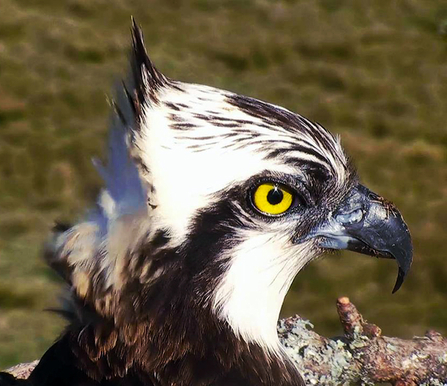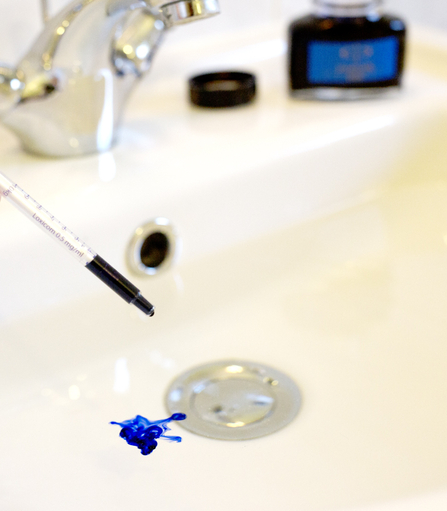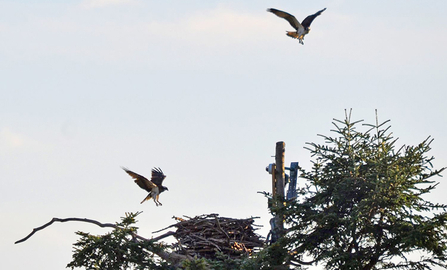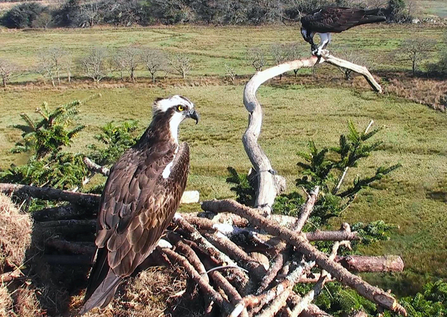Over the years, the question of inbreeding in ospreys has often cropped up. The recent arrival of a son of the Glaslyn ospreys at the north Wales nest has caused some raised eyebrows, but it really shouldn't.
Blue 80 is a male chick hatched at the Glaslyn nest in 2012. In 2014 he was spotted back in the UK for the first time as a two-year-old, causing havoc at the Dyfi nest! He had returned to the UK as an adult and was prospecting for a nest site and a mate. Blue 80's father has not returned to the Glaslyn nest in 2015 and on 16th April, his son Blue 80 replaced him as the male of the pair.
Blue 80 on the Dyfi nest in 2014 - the fledgling (left) is Deri.





